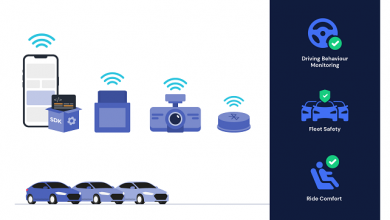Understanding Shared Mobility in the EU and its impact on the Mobility Ecosystem

The European Shared Mobility Ecosystem
Mobility is undergoing a major change in the way people access it. The movement from owning goods to using services, the cornerstone of Circular Economy, has also been impacting Mobility. Be it Scooters, Cars or even Commercial Vehicles – shared mobility trends seem to be on the uptick. In this article, we analyze the trends in shared mobility in Europe and its impact on OEMs, insurers, RSA providers and other stakeholders.
The European shared-mobility market has an estimated value of about €70 billion. By 2030, shared-mobility spending is projected to reach €150 billion for a base-case scenario and about €200 billion for an accelerated scenario in the model of mobility markets.
There are multiple drivers behind the uptake, like increased consumer willingness to use shared vehicles, a regulatory push to steer people from private-car ownership to alternative mobility options, and the introduction of shared autonomous mobility. The European shared mobility sector grew by 76 per cent in 2021 year-over-year, according to fluctuo’s annual European Shared Mobility Index review. Ridership peaked in September with around 25 million trips in one month alone, while the combined fleet reached a record 290,000 shared vehicles in November. Even winter (usually the weakest season for shared mobility) has broken records; Q4 2021 saw around 9 million extra trips than in Q4 2020 with the shared vehicle fleet roughly 76% larger than in 2020.
The revenue in the Shared Mobility segment is projected to reach US$274.50bn in 2022. Furthermore, revenue is expected to show an annual growth rate (CAGR 2022-2026) of 9.68%, resulting in a projected market volume of US$397.30bn by 2026. The market’s largest segment is Shared Vehicles with a projected market volume of US$217.70bn in 2022 which further validates a consumers driven demand for shared mobility options instead of ownership driven models. The number of users is expected to amount to 628.4 million users by 2026. The average revenue per user (ARPU) is expected to amount to USD 400.
Revenue in the E-Scooter-sharing segment is projected to reach USD 640.40m in 2022 with an annual growth rate (CAGR 2022-2026) of 15.33%, resulting in a projected market volume of US$1,133.00m by 2026. The number of users is expected to amount to 54.9m users by 2026, with user penetration at 4.0% in 2022 and is expected to hit 6.5% by 2026. The average revenue per user (ARPU) is expected to amount to US$18.93.
With regards to private car-based transport, both Car Rentals and Car-Sharing have been growing at a steady rate. Revenue in the Car Rentals segment is projected to reach US$11.20bn in 2022 with an annual growth rate (CAGR 2022-2026) of 13.21%, resulting in a projected market volume of US$18.40bn by 2026. The number of users is expected to amount to 63.3m users by 2026 and user penetration is 4.7% in 2022 and is expected to hit 7.5% by 2026. The average revenue per user (ARPU) is expected to amount to US$278.40. On the other hand, within the Car-Sharing segment, revenue is projected to reach US$4.29bn in 2022 with an annual growth rate (CAGR 2022-2026) of 8.22%, resulting in a projected market volume of US$5.89bn by 2026. The number of users is expected to amount to 19.3m users by 2026 with user penetration is 1.8% in 2022 and is expected to hit 2.3% by 2026. The average revenue per user (ARPU) is expected to amount to US$287.30.
Shared Mobility Driving the Next Wave of Innovation Across Stakeholders
Changes in consumer behavior always push for and reward innovations across the entire value chain. Shared Mobility’s impact on the sector is no different. Whether it’s the OEM, the insurer, the Extended Warranty/Roadside Assistance Service Provider or technology companies and platform enabling these companies – the increase in demand for a usage driven, mobility as a service v/s traditional ownership driven approach has already brought major innovations in business models and solutions offered.
With Shared Mobility, revenue generation unit has changed from upfront payments towards a vehicle/mobility product to a kilometer/mile-based model. It has forced the ecosystem to rethink a vehicle’s TCO from a per km/mile of usage and identifying methods to achieve a comparable (if not better) average price per kilometer compared to traditional vehicle ownership.
The second major need that Shared Mobility has created in the sector is to simplify the user experience and bundle all services and insurance into a single product rather than offering it via dedicated legacy channels. In the age of pay-as-you-go and floating fleets, incomplete coverage or complex onboarding and add-on services booking is simply not an option. While the individual service providers for these services could still be different companies, consolidation of the entire value chain into a simple to use and simple to onboard platform which supports usage-based pricing models on behalf of these service and insurance companies is crucial.
As things progress, the user penetration for Car Subscription and Car-Sharing is expected to grow compared to direct sales or leasing models. Traditional insurance, RSA, Extended Warranty models are simply not an option considering these requirements. Consequently, the sector is already seeing a continuously growing adoption for UBI and BBI based insurance, optional usage-based add-ons like EW, RSA, Excess Coverage, etc.
Roadzen’s Insurance as a Service (IaaS) and Mobility as a Service (MaaS)
Our Insurance as a Service (IaaS) and Mobility as a Service (MaaS) platforms are our offering to contribute to the continued growth of Shared Mobility. Our Insurance as a Service Platform helps OEMs, dealerships, and any other provider of Shared Mobility to offer usage-based insurance policy products (UBI/BBI), Extended Warranty, Roadside Assistance, Crashlytics, Claims Management with added benefits of GAP Insurance and Minor Damage Coverages. Furthermore, our Mobility as a Service (MaaS) offerings complement IaaS by integrating next generation telematics solution to generate rich and meaningful insights based on which vehicle ownership costs can be reduced and customer rewards/retention programs can be improved. These two platforms together offer one of the most comprehensive solutions currently available for the OEMs and direct providers in the Shared Mobility market.
Mobility has seen many trends over the last centuries. However, there have been only a few trends have had as deep and long-term an impact as we feel that Shared Mobility would have on the sector. Shared Mobility has the potential to fundamentally change and improve accessibility to safe and sustainable mobility options for everyone. We at Roadzen are glad to be part of this journey.
Author

Ayan
VP Product Management/Head of Product Management
Roadzen
Founder and CPO at Kruzr (https://kruzr.co/) with hands-on experiences in Business Development and Product Management, Big Data Analytics and AI/ML Topics. Bootstrapped a venture in Mobility-AI space from Bangalore, subsequently expanding the business and product offering to EU, UK and the US markets. Well- networked within the European Tech and insurance ecosystems along with deep partnerships with IT and SI providers. Prior to Kruzr, have built product teams from scratch at 4 different companies within B2B SaaS businesses.
Published in Telematics Wire





